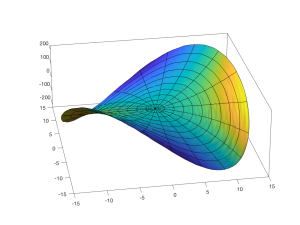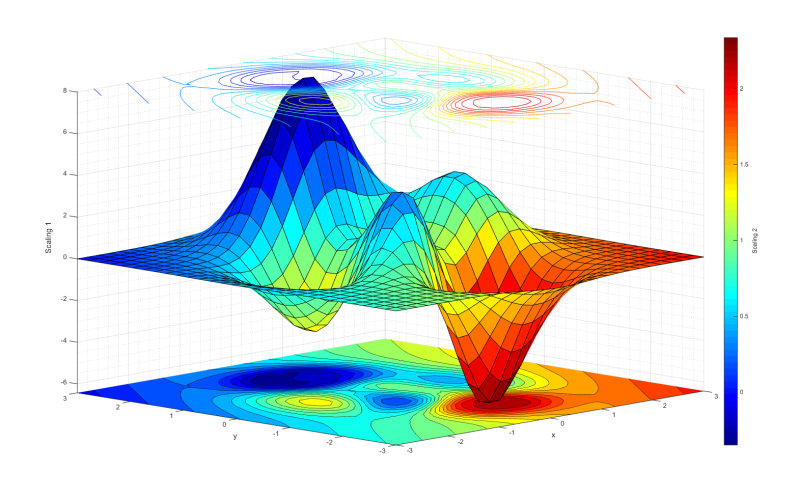Quantum mechanics has revolutionized our understanding of the universe, delving into the realm of the incredibly small, where particles behave in ways that defy classical intuition. At the heart of this understanding lies quantum field theory, a framework that unites quantum mechanics with the concept of fields permeating space. In this article, we will embark on a journey through the quantum realm, exploring the intricacies of field theory and its significance in our quest to comprehend the fundamental forces of nature.
Introduction to Quantum Realm
What is the quantum realm?
The quantum realm, also known as the subatomic realm, is the domain where quantum mechanics governs the behavior of particles. Here, the classical laws of physics break down, and phenomena such as particle-wave duality and uncertainty principle reign supreme. Understanding this realm is crucial for unraveling the mysteries of the universe.
Basics of Quantum Field Theory
Overview of quantum field theory
Quantum field theory is a theoretical framework that combines quantum mechanics with field theory to describe the behavior of particles and their interactions. In this framework, particles are viewed as excitations of underlying fields that permeate space.
Fundamental concepts: fields and particles
In quantum field theory, fields represent physical quantities that vary in space and time. Particles emerge as quantized excitations of these fields, manifesting as discrete entities with distinct properties such as mass, charge, and spin.
Quantum Mechanics vs. Quantum Field Theory
Key differences between quantum mechanics and quantum field theory
While quantum mechanics focuses on the behavior of individual particles, quantum field theory extends this framework to include fields that can interact and exchange energy. Thus, quantum field theory provides a more comprehensive description of particle interactions and dynamics.
Evolution from quantum mechanics to quantum field theory
The development of quantum field theory was driven by the need to reconcile quantum mechanics with special relativity. Pioneering work by theorists such as Paul Dirac and Richard Feynman laid the foundation for this synthesis, leading to the emergence of quantum field theory as a powerful tool in theoretical physics.
The Standard Model
Explanation of the Standard Model
The Standard Model is a quantum field theory that describes three of the four fundamental forces of nature: electromagnetism, weak nuclear force, and strong nuclear force. It encompasses a set of elementary particles and their interactions, providing a remarkably accurate description of observed phenomena.
Components and interactions described by the Standard Model
The Standard Model includes fermions (quarks and leptons) and bosons (gauge bosons and the Higgs boson), which mediate interactions between particles. These interactions are governed by fundamental forces, which are transmitted through the exchange of gauge bosons.
Quantum Field Theory and Particle Physics
How quantum field theory is applied in particle physics
Quantum field theory serves as the theoretical framework for particle physics, providing a systematic approach to understanding the behavior of particles and their interactions. It allows physicists to calculate observables and make predictions that can be tested experimentally.
Understanding elementary particles and their interactions
Elementary particles, such as quarks and leptons, are described as excitations of underlying fields in quantum field theory. Interactions between particles are mediated by the exchange of gauge bosons, which transmit the fundamental forces between particles.
Vacuum Fluctuations

Definition and explanation of vacuum fluctuations
Vacuum fluctuations are quantum fluctuations that occur spontaneously in empty space, giving rise to virtual particle-antiparticle pairs that continuously appear and disappear. These fluctuations are a manifestation of the inherent uncertainty of quantum mechanics.
Role of vacuum fluctuations in quantum field theory
Vacuum fluctuations play a crucial role in quantum field theory, contributing to phenomena such as the Casimir effect and Lamb shift. They also lead to renormalization, a process that removes divergences in quantum field theory calculations and ensures meaningful results.
Renormalization
What is renormalization?
Renormalization is a mathematical technique used to remove infinities that arise in quantum field theory calculations. By redefining physical quantities such as mass and charge, renormalization allows physicists to obtain finite, physically meaningful results.
Importance of renormalization in quantum field theory
Renormalization is essential for the consistency and predictive power of quantum field theory. It enables physicists to make precise calculations and compare theoretical predictions with experimental observations, thereby validating the theory.
Quantum Electrodynamics (QED)
Overview of quantum electrodynamics
Quantum electrodynamics is a quantum field theory that describes the electromagnetic interaction between charged particles. It provides a theoretical framework for understanding phenomena such as light-matter interactions and atomic structure.
Application of QED in understanding electromagnetic interactions
QED has been remarkably successful in predicting and explaining a wide range of electromagnetic phenomena, from the behavior of electrons in atoms to the interactions of light with matter. Its predictions have been confirmed with exquisite precision by experiments.
Quantum Chromodynamics (QCD)
Explanation of quantum chromodynamics
Quantum chromodynamics is the quantum field theory that describes the strong nuclear force, which binds quarks together to form protons, neutrons, and other hadrons. It is based on the principle of color charge and the exchange of gluons between quarks.
Role of QCD in describing strong nuclear interactions
QCD plays a crucial role in understanding the structure and dynamics of atomic nuclei and the behavior of matter under extreme conditions, such as in the early universe or inside neutron stars. Its predictions have been tested extensively in experiments.
Electroweak Theory
Introduction to electroweak theory
Electroweak theory is a quantum field theory that unifies the electromagnetic and weak nuclear forces into a single theoretical framework. It postulates the existence of W and Z bosons, which mediate weak interactions, and predicts phenomena such as neutrino oscillations.
Unification of electromagnetic and weak forces
Electroweak theory provides a unified description of electromagnetic and weak interactions, shedding light on the underlying symmetry of the fundamental forces. Its successful prediction of the W and Z bosons was a triumph for the field of particle physics.
Grand Unified Theory (GUT)

Definition and significance of Grand Unified Theory
Grand Unified Theory is a hypothetical framework that seeks to unify all fundamental forces, including gravity, into a single theoretical framework. It postulates the existence of new particles and symmetries beyond those described by the Standard Model.
Attempt to unify all fundamental forces
While Grand Unified Theory remains speculative, it represents a tantalizing possibility for physicists seeking a deeper understanding of the universe. By unifying the forces of nature, GUT could provide insights into phenomena such as the origin of mass and the nature of dark matter.
Quantum Gravity
Challenges in integrating gravity into quantum field theory
Gravity has proven to be the most elusive force to incorporate into quantum field theory, primarily due to its inherently nonlinear nature. Efforts to develop a consistent theory of quantum gravity, such as string theory and loop quantum gravity, face significant theoretical and mathematical challenges.
Current theories and approaches in quantum gravity
String theory posits that fundamental particles are actually tiny, vibrating strings, whose different vibrational modes correspond to different particles and interactions. Loop quantum gravity, on the other hand, treats spacetime as a network of interconnected loops, leading to a discrete description of space and time.
Practical Applications of Field Theory
Applications in condensed matter physics
Quantum field theory has applications beyond particle physics, particularly in condensed matter physics, where it provides insights into the behavior of materials at the atomic and subatomic scales. It has led to advances in areas such as superconductivity, quantum magnetism, and topological phases of matter.
Role of field theory in cosmology
Field theory also plays a crucial role in cosmology, the study of the origin and evolution of the universe. It provides the theoretical framework for understanding phenomena such as cosmic inflation, the cosmic microwave background, and the formation of large-scale structure.
Challenges and Open Questions
Remaining challenges in understanding field theory
Despite its successes, field theory faces several challenges, including the need to incorporate gravity into a unified framework and the unresolved questions surrounding the nature of dark matter and dark energy. These challenges motivate ongoing research and exploration in theoretical physics.
Open questions in quantum field theory
Numerous open questions remain in quantum field theory, ranging from the nature of particle masses to the possibility of new symmetries and particles beyond those described by the Standard Model. Addressing these questions will require innovative theoretical insights and experimental discoveries.
Conclusion
In conclusion, navigating the quantum realm requires a deep understanding of field theory, the theoretical framework that underpins our current understanding of particle physics and the fundamental forces of nature. From the Standard Model to Grand Unified Theory, field theory provides a roadmap for exploring the mysteries of the universe and unlocking its secrets.
FAQs
What is the quantum realm?
The quantum realm is the domain where quantum mechanics governs the behavior of particles, leading to phenomena such as particle-wave duality and uncertainty principle.
How does quantum field theory differ from quantum mechanics?
Quantum field theory extends quantum mechanics by incorporating fields that can interact and exchange energy, providing a more comprehensive description of particle interactions.
What is renormalization in quantum field theory?
Renormalization is a mathematical technique used to remove infinities that arise in quantum field theory calculations, ensuring meaningful results.
What are vacuum fluctuations?
Vacuum fluctuations are quantum fluctuations that occur spontaneously in empty space, giving rise to virtual particle-antiparticle pairs.
What are some practical applications of field theory?
Field theory has applications in condensed matter physics, cosmology, and other fields, leading to advances in areas such as superconductivity and the study of the early universe.










